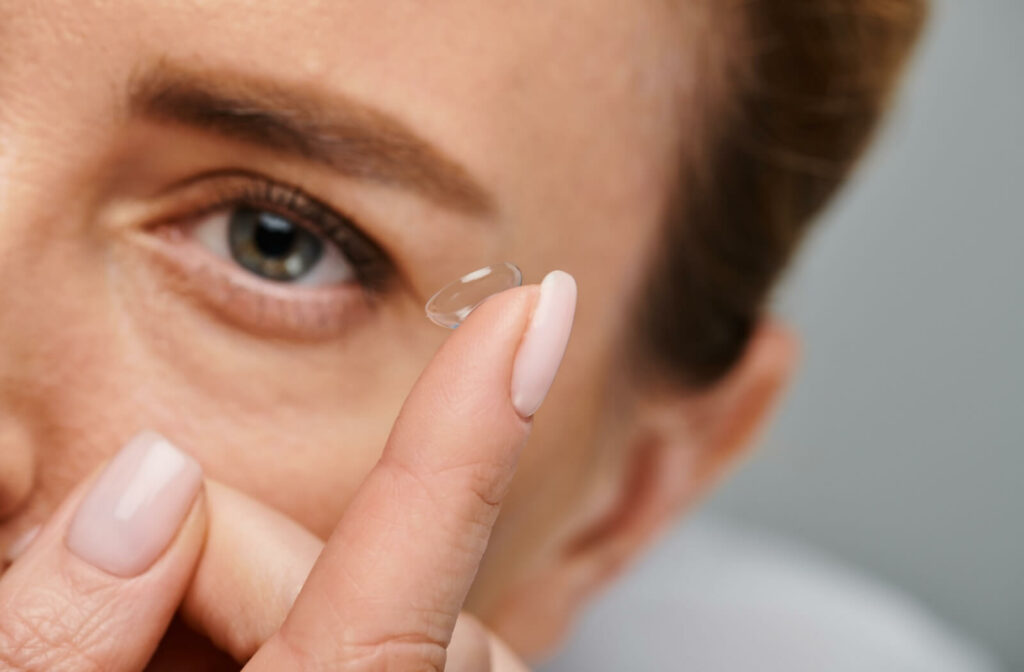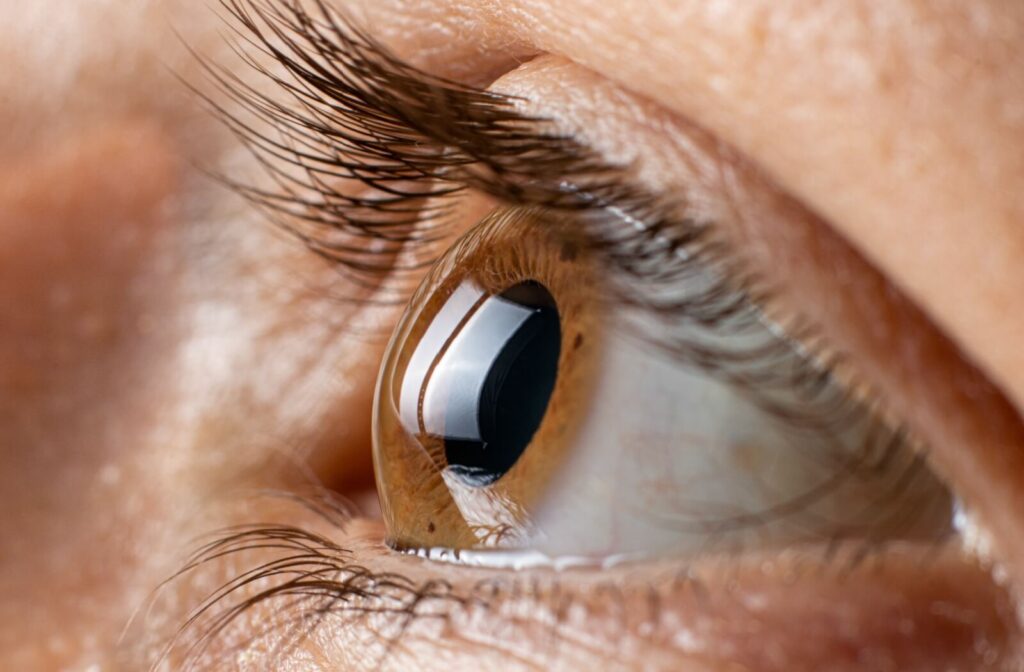Keratoconus is a progressive eye condition that affects the cornea, causing it to thin and bulge into a cone-like shape. This irregular shape leads to significant amounts of astigmatism, distorting vision and making daily tasks such as reading, driving, or watching television challenging.
Keratoconus cannot be cured completely, but with proper management and treatment, its progression can often be slowed, and vision can be significantly improved. At Tree City Eyecare, we can customize scleral contact lenses to help you manage keratoconus and preserve your sight.
Symptoms of Keratoconus
The symptoms of keratoconus vary depending on the severity of the condition. Early signs can be subtle, but as the condition progresses, symptoms often include:
- Blurred or distorted vision: The irregular shape of the cornea disrupts how light enters the eye.
- Increased sensitivity to light: Bright lights may cause discomfort or glare, making it harder to see clearly.
- Frequent prescription changes: Patients may notice their glasses or contact lens prescriptions need updating more frequently than usual.
- Double vision or ghosting: Some people experience multiple images or shadowing in their vision.
If you’re experiencing any of these symptoms, scheduling a comprehensive eye exam is essential. Early diagnosis and treatment can prevent keratoconus from severely impacting your vision.
What Causes Keratoconus?
The exact cause of keratoconus is unknown, but it’s believed to result from a combination of genetic, environmental, and biochemical factors. People with a family history of keratoconus are at a higher risk.
Other potential contributors include:
- Eye rubbing: Excessive rubbing of the eyes can weaken the corneal tissue over time.
- Underlying medical conditions: Certain conditions, such as connective tissue disorders, may increase the risk of developing keratoconus.
- Oxidative stress: Damage caused by free radicals within the corneal tissue may also play a role.
How Is Keratoconus Treated?
While keratoconus cannot be cured, several treatments can help manage the condition and improve vision. The appropriate treatment depends on the severity of the condition and how it affects your daily life. If keratoconus is progressing, corneal collagen crosslinking is recommended with a corneal surgeon to slow or halt progression. We discuss vision correction options below.
In the early stages, eyeglasses or soft contact lenses can correct the nearsightedness and astigmatism associated with keratoconus. However, when keratoconus is left to progress, and the cornea becomes increasingly cone-shaped, regular contact lenses may no longer properly sit on your cornea.
What Are Scleral Lenses?
Scleral lenses are designed to rest on your sclera, the white part of your eyes, and vault over the cornea.
A scleral lens leaves a gap between the lens and the surface of your eye, and you can fill this gap with a saline solution to provide comfort and hydration.
Scleral lenses are specialty contact lenses that can help address various eye issues, such as:
- Keratoconus
- Dry eye
- Corneal scarring
- Corneal transplant
Benefits
Scleral lenses are larger and have a unique design, which minimizes movement when we blink and maximizes vision correction. Scleral lenses offer several benefits, including:
- Improved vision correction: The larger surface of scleral lenses helps account for irregularities in the cornea to properly correct vision.
- Comfortable fit: Unlike smaller lenses, scleral lenses rest on the sclera, avoiding contact with the sensitive corneal tissue.
- Hydration and healing: The fluid reservoir between the lens and the cornea keeps the eye hydrated, reducing symptoms of dryness and promoting overall eye health.

How to Protect Your Vision
Living with keratoconus requires proactive steps to maintain your vision and prevent further complications. Here are some tips to protect your eye health:
- Schedule regular eye exams: Consistent monitoring by your eye care professional can detect changes in your condition early.
- Avoid rubbing your eyes: Rubbing can worsen corneal damage. Use lubricating eye drops to provide quick relief from discomfort instead.
- Follow your treatment plan: Whether it’s wearing your contact lenses as prescribed or attending follow-up appointments, adhering to your eye doctor’s recommendations is crucial.
- Protect Your Eyes: Wear sunglasses to shield your eyes from UV rays, which can exacerbate keratoconus symptoms.
Take the First Step
While keratoconus cannot be cured, special treatments and technologies make it possible to manage the condition effectively. Our team at Tree City Eyecare is dedicated to providing personalized care that meets your unique needs.
If you’ve been diagnosed with keratoconus or suspect you may have it, don’t wait to seek treatment. Schedule an appointment today and take the first step toward preserving your vision and improving your quality of life. We’re here to help you see clearly and live confidently!


